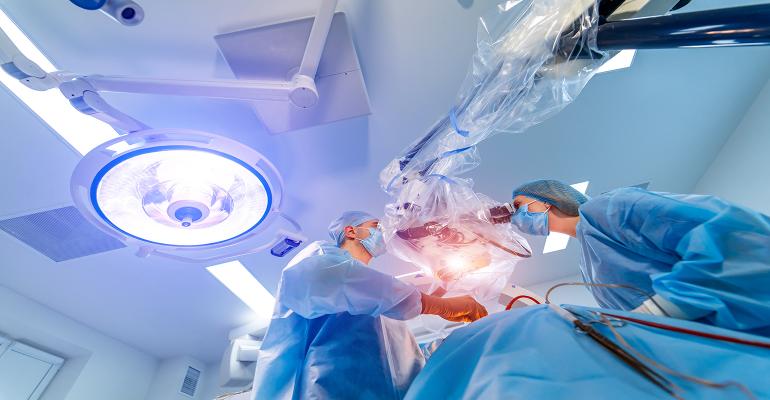Strategic initiatives for the development of innovative microsurgery robot devices is expected to impel the microsurgery robot market growth. Increasing preference for minimally invasive surgeries owing to quick recovery time is anticipated to drive the demand for microsurgery robots. Improvements in healthcare infrastructure and the introduction of advanced medical systems and technologies like the miniaturization of medical robots could have a positive influence on market expansion.
Microsurgery robots are widely used in oncological, cardiovascular, and neurological surgeries. Advanced surgical robots find application in hospitals and ambulatory surgery centres, which is expected to raise the number of robotic-assisted surgical procedures. Considering rising application, microsurgery robot manufacturers are working on novel, advanced technologies and products. For example, in 2020, medical device company, Titan Medical announced the launch of a new brand identity and name for their robotic surgical system that is under development, known as the Enos robotic single access surgical system.
Based on such developments, Global Market Insights, Inc., suggests that the microsurgery robot market may surpass US$2.1 billion by 2026.
How are chronic diseases and lifestyle habits impacting industry growth?
Chronic illnesses such as cardiovascular disease, stroke, cancer, diabetes and neurological disorders is driving the need for numerous surgical procedures. Sedentary lifestyle changes like alcohol consumption and smoking are likely to lead to high disease prevalence, furthering the need for microsurgery robot devices in clinical procedures.
Which type of surgery is majorly incorporating robots?
Microsurgery robots are steadily gaining application in oncology surgeries. The oncology surgery segment gained about 20 per cent market share in 2019 and is projected to grow substantially owing to rising prevalence of cancer across the world.
As per a report by the WHO, around 9.6 million deaths occurred worldwide in 2018. Robotic surgery can be used for the treatment of different types of cancer including prostate cancer, lung cancer, colorectal cancer, and others.
How are research institutes fuelling the demand for microsurgery robots?
Increasing number of research projects being conducted worldwide are expected to raise the demand for microsurgery robots. The research institutes segment recorded over 14.4 per cent CAGR in the analysis timeframe. The need to enhance accuracy of surgery and decrease the cost of surgical robots is likely to increase the number of R&D activities. Support by government organisations and funding in research activities is some other segment growth drivers.
Currently, companies such as Zimmer Biomet, Intuitive Surgical, Meerecompany, Medtronic, Stryker, Medrobotics Corporation, Auris Health (Johnson & Johnson), Smith & Nephew, Corindus Inc. (Siemens Healthineers), Titan Medical, and TransEnterix Surgical are the major contenders in the global microsurgery robot market. These firms are focusing on improving their market position through business strategies such as new product development, R&D activities, and geographical expansions.


